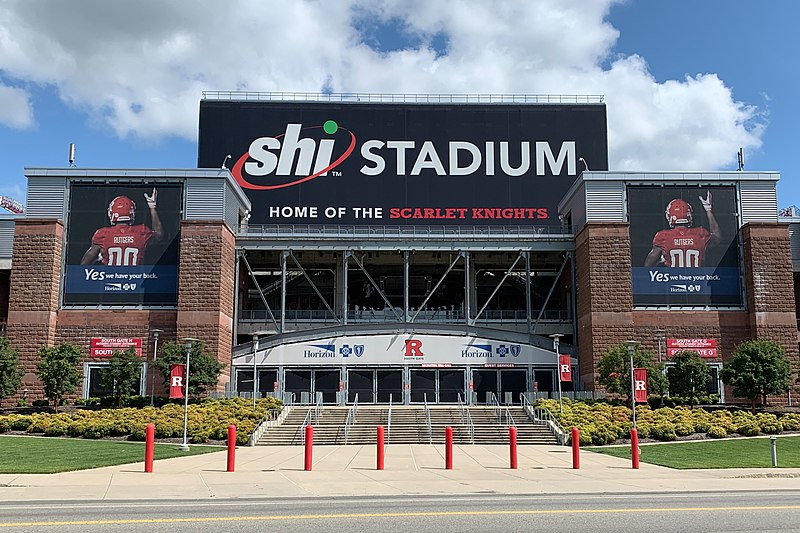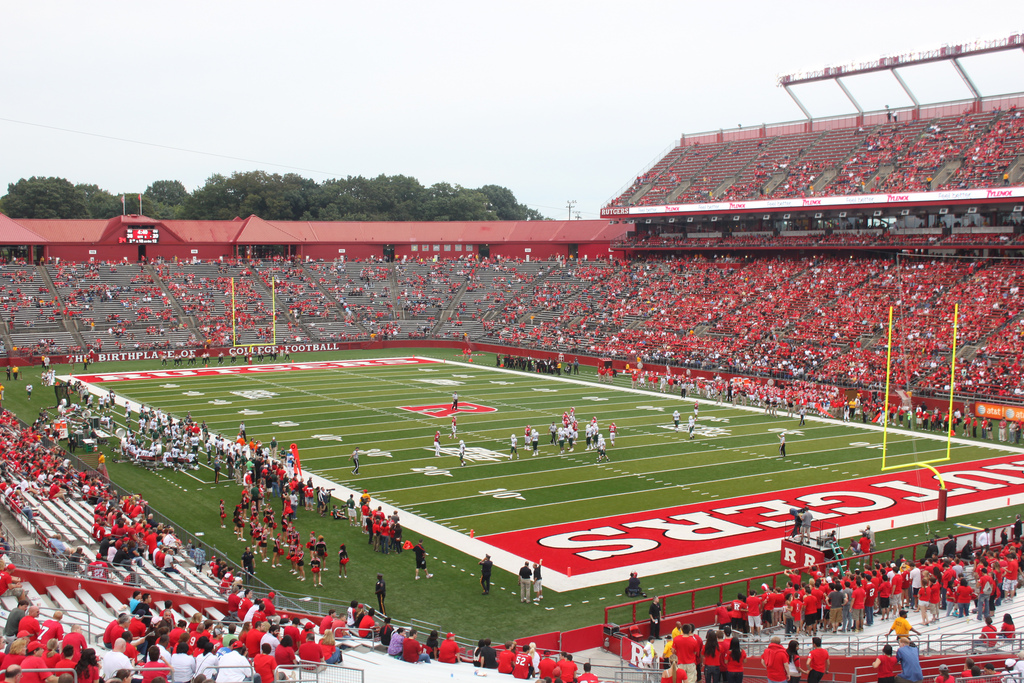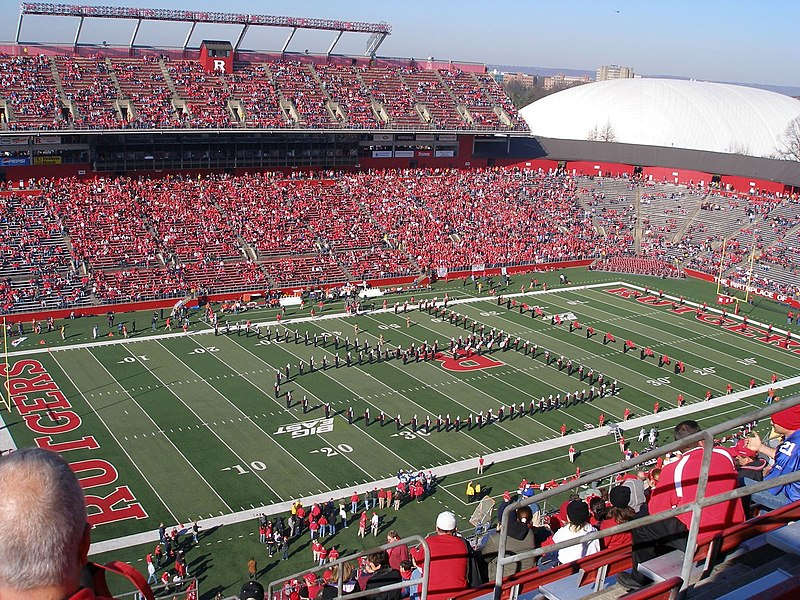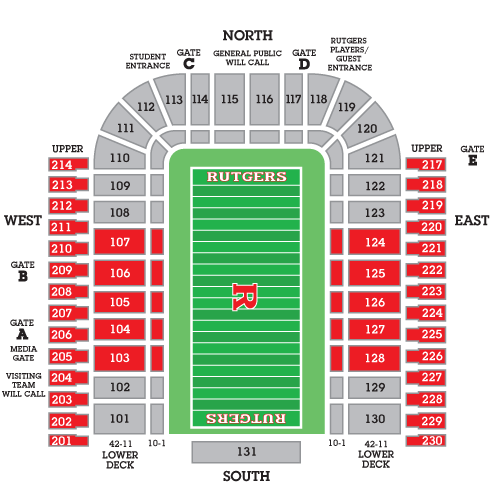
The history of college football dates back to Rutgers University as the first ever college football game was played between Princeton and Rutgers on November 6, 1869. Prior to the opening of the current stadium, the team played at the old Rutgers Stadium that opened in 1938. By the early 1990s a new stadium for the team was being discussed because of the age of the old Rutgers Stadium. In 1992, the New Jersey Sports and Exposition Authority financed a new stadium for the team. Construction began soon after and was completed in time for the first game on September 3, 1994 when Rutgers played Kent State. In June 2011 Rutgers Stadium was renamed High Point Solutions Stadium as Rutgers University sold the naming rights in order to generate additional revenue. In July 2019 SHI International Corporation, an IT company, purchased the naming rights for seven years, thus the stadium is now known as SHI Stadium.
The stadium has a seating capacity of 52,454 with the main lower grandstand in a horseshoe shape. Two 5,000 seat upper decks are located on the east and west sides of the stadium. A two tier press box is located on the west side of the stadium. On the open end, south side of the stadium is the main scoreboard. Two years after the stadium was completed, the field was shifted 25 feet to the west and the track was removed to add more seats that are closer to the field. This addition added 500 seats to the stadium. Originally the stadium had a grass field but Fieldturf was installed in 2005 to reduce costs. In January 2008, the Rutgers Board of Governors approved a $102 million expansion plan that increased the seating capacity of Rutgers Stadium to 52,454. This expansion was completed by the 2009 season and included adding 12,500 seats to the south endzone, a new video/scoreboard and sound system.


